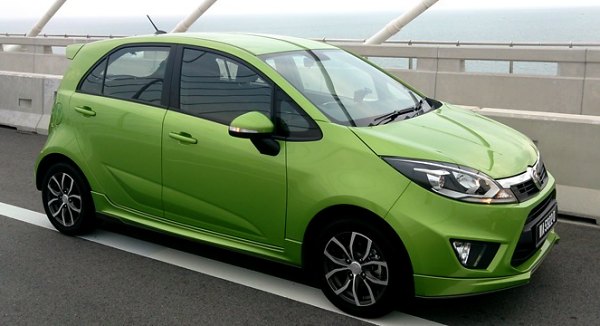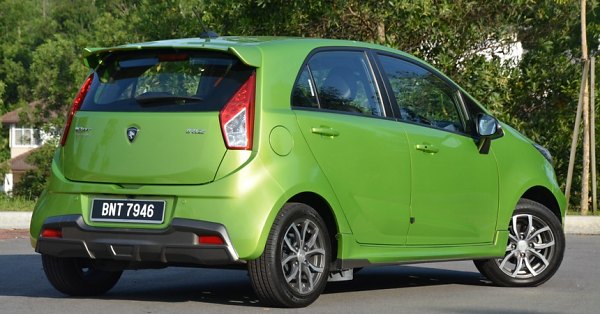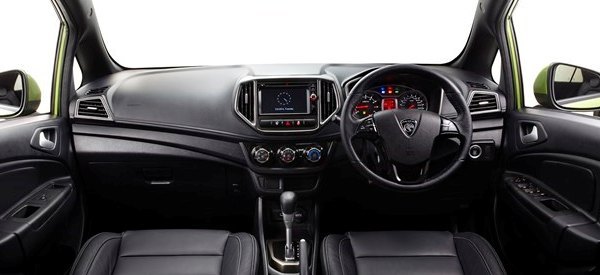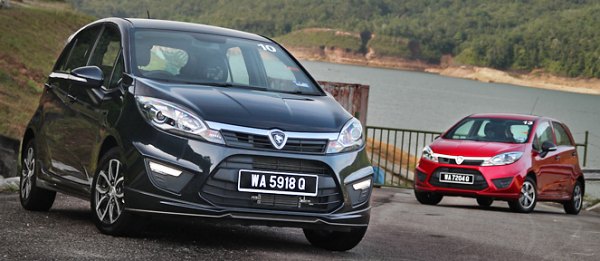Published
on 11
Jan 2017
|
All rights reserved.
|
|
|
 |
|
This
might be our last review on a Proton as DRB-Hicom is selling the car
maker.
|
|
Proton has always
been a headache to its backer, the Malaysian government, and its owner
DRB-Hicom. In spite of continuous investment into new products and
facilities, employing Western engineering consultants for designing its
cars and countless of promises of improving quality standards, its
image never recovered and its sales never took off. In fact, it kept
sliding. In 2015, it sold just over 100,000 cars, a joke for mass
production manufacturer. And this was shared across multiple models, so
you can imagine how poor the economy of scale. In contrast, local rival
Perodua needed just one model (Axia) to sell the same number as the
entire Proton lineup. Worse still, under the stronger and stronger
competition from Japanese manufacturers, there is little hope for
rebound in the foreseeable future. No wonder DRB-Hicom revealed the
intention to sell Proton to foreign car groups. If my forecast is
correct, a deal will be made soon, and Proton will stop developing its
own cars – maybe it could do some localization jobs based on foreign
designs, just like what Perodua does, but clean sheet developments will
be no more. As a result, this might be our last review on a Proton.
Proton Iriz arrived in September 2014 as a replacement to the
long-serving, seriously outdated Savvy.
In other words, it is the company’s entry-level car and a rival to
sales champion Perodua Myvi (a localized Daihatsu Boon/Toyota Passo).
Malaysian motoring diehards had very high expectation for it, not least
because they had been waiting for an affordable small car that is more
stylish and more exciting to drive than the Perodua. To a large extent,
these expectations have been fulfilled. The Iriz is a good looking
hatchback. It’s not quite as sharp as Ford Fiesta or as cute as Fiat
500, but it is thoroughly modern and have plenty of stylish touches,
such as the sharp headlights, a sweeping waistline and slightly flared
wheel arches. While its predecessor fell into A-segment, the Iriz is a
lot larger, measuring 3920mm in length (up 210mm), 1722mm in width
(+79mm), 1554mm in height (+74mm) and runs a much longer wheelbase at
2555mm (+160 mm). This means it is now a B-segment car. Theoretically
it is a class higher than Myvi, but curiously Proton is able to price
it at comparable levels.
 |
|
It’s
not quite as sharp as Ford Fiesta or as cute as Fiat
500, but it is thoroughly modern and have plenty of stylish touches. |
|
The car was developed in-house, while subsidiary Lotus was believed to
have a hand in the tuning of its ride and handling (as usual). Just
like everything else in the class, it rides on MacPherson struts up
front and a torsion beam at the back. The steering is assisted
electrically, a first for Proton, and the system is supplied by ZF.
Under the bonnet, you can choose either a 1.3-liter or 1.6-liter
engine. Both are lightly developed from the existing Campro engine and
feature intake variable valve timing. There is no direct injection or
turbocharging, but this is hardly a sin for this class. The smaller
engine produces 94 hp and 88 lbft
of torque at 4000 rpm. The larger engine is basically its long stroke
version,
making 107 hp and 111 lbft of torque. The output figures are decent, as
are the performance figures (see spec. table).
However, they comply with only Euro 4 emission standard thus are not
possible to be exported to developed countries. They also lack fuel
saving tech like automatic stop-start. Both engines can be mated with
either a 5-speed manual gearbox or a CVT, which is again supplied by
Dutch company Punch. The same CVT on Preve / Suprima caught a lot of
criticisms, but Proton claimed they had been improved for Iriz.
In terms of safety equipment, the Iriz is quite generous and
up-to-date. It offers standard ABS, TC and ESP on all models. The cabin
offers an infotainment system with 6.2-inch touchscreen, Bluetooth,
GPS, USB ports, engine start button, rear-view camera and audio
controls on the steering wheel. Frankly, we did not expect the Proton
entry-level car to be so modern and so well equipped.
 |
|
Build
quality is easily higher than any self-developed Protons, but falls
short of the industrial standards. |
|
The positive impression continues when you enter the cabin. The driving
position is spot-on, while the driver seat is supportive. Given the
extra dimensions, the cabin offers plenty of space. Curiously, the
smaller Myvi still beats it on rear head and legroom, proving the
Japanese know-how of space efficiency. However, compared with other
B-segment hatchbacks the Iriz is not particularly cramped at the back.
The 215-liter boot is on the small side though, and the hatch opening
is narrow.
The design of the interior is quite modern, if a bit rough and edgy for
my taste. Predictably, quality of materials and build are no match with
European hatchbacks. There are some rough edges and uneven panel gaps
that
you won’t find on Japanese small cars. Surprisingly, top trims include
leather seats and faux stitched leather upholstery on the dash top to
cover the otherwise hard plastics. They don’t feel exactly high-quality
when in touch, but do improve the visual quality. Not so the small
parts. Switches feel brittle and operate without tactile feel. The
air-conditioning dials turn loosely and feel especially cheap. The
touchscreen is
unresponsive to your input... None of these problems are fatal. They
just imply that Proton does not employ the best quality suppliers –
from another perspective, the best suppliers are not interested in the
volume and prices offered by Proton. Still, the Iriz’s build quality is
easily
higher than any self-developed Protons, including the larger
Preve/Suprima. Moreover, judging from the criticisms gathered in the
past 2 years, its reliability seems to have been improved a lot, if not
exactly world-class. At least, its power windows are still working, and
few parts fall off from its cabin.
 |
|
Many
Japanese CVTs have managed to relieve “rubberband effect”, but this one
is still
an old-fashioned, stupid CVT. |
|
For a B-segment hatchback, the Iriz is a bit overweight. The lightest
version with 1.3-liter engine and manual gearbox weighs 1130 kg, while
the heaviest 1.6 CVT adds another 55 kg. This put strain on the
engines, which are already not world-class. As a result, real-world
performance is average. The manual gearbox is generally slick to shift
and coupled with a light clutch, but its ratios are widely spaced to
please fuel economy instead of driving fun. Still, it is a much better
choice than the Punch CVT, which is once again poor. It saps up power
and causes the acceleration to lag behind the engine rev. The engine
screams under full throttle but there is little reaction from the car.
Many Japanese CVTs have managed to relieve this “rubberband effect” by
automatically locking up under hard acceleration, but this one is still
an old-fashioned, stupid CVT. Proton claims the CVT-equipped 1.6 takes
the same time to accelerate from 0-60 mph as the manual-equipped car.
In the real world, it feels a lot slower.
Fortunately, with a chassis tuned by Lotus, the Proton once again
shines in the twisty. It is gifted with a taut body control, with body
roll well checked in corner, yet the suspension is well damped over
bumps and potholes. At speed, it remains composed and stable. The ZF
electrical power steering does a good job to offer precise and
consistent response. It feels more communicative than most other EPS in
the segment, and it weighs up nicely at speed. If not the mediocre grip
supplied by its cheap tires, this car could be driven very hard in the
twisty.
Ultimately, the fine chassis of Iriz is not matched by the powertrain,
build quality and noise suppression. The company’s poor reputation also
hurts its prospect. Perhaps that is why it sold only 17,000 cars in
2015, and even fewer last year. Sadly, the Malaysian national car
project is likely to end in this way.
|
Verdict:   |
|